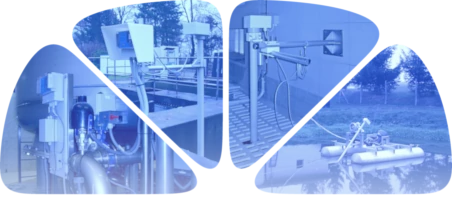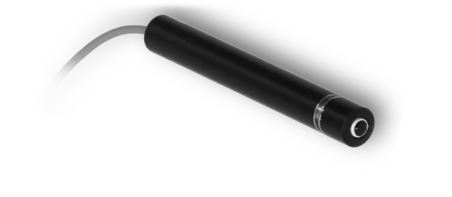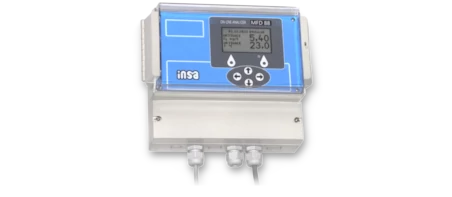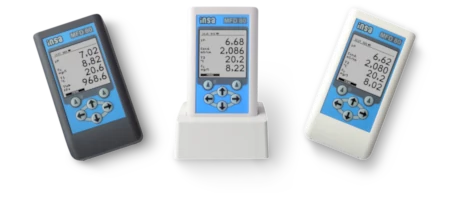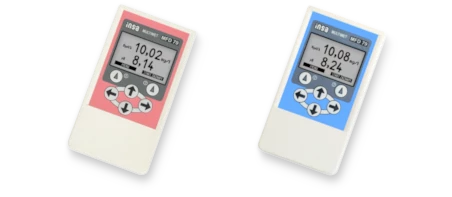Conductivity: Sensors
Appropriate sensor is fundamental to any measurement setup. Variety of different types and variants are available, depending on the measured quantities, sensor dimensions, as well as usage workflow, environment, and installation method. The vast majority of sensors listed below are just components of a larger measurement setup, and can therefore be satisfactorily used only with a compatible analyzer. Sensors for in-technology measurements should be installed inside our probes, ensuring their fixing and protection, and these connect to a terminal block. Variants for laboratory and portable usage are terminated with the appropriate connector. Sensors generally have the shortest lifetime of the entire setup, due to direct contact with the measured medium.
Conductivity sensors
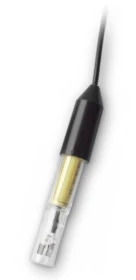

Classic glass sensors with platinum electrodes (series C21, C29) excel in chemical resistance and a wide range of operating temperatures. Due to their shape, however, these sensors are difficult to clean and are therefore not suitable for measuring contaminated water - these sensors cannot be used with automatic sensor cleaning.
The CS21 sensor is better suited for industrial applications. Its robust stainless steel electrodes are arranged in one plane, which allows them to be easily cleaned (especially by the automatic mechanism of the SPO41ME and SPR41ME probes) and thus to measure even heavily contaminated samples. However, the materials used (stainless steel, PVC, Polyethylene terephthalate) limit these sensors to a less aggressive environment, with a limited range of working temperatures.
In connection with the advanced technology of INSA instruments, the listed two-electrode sensors can successfully measure even very high values of conductivity (exceeding 100 mS/cm).
| Type | Suitable for | Dimensions | Temperature sensing element | Operating temperature |
| C21 | Installation with SPO41, SPO42, SPR42, SVK42, PE G3/4D | Ø12.2 x 115 mm | None | -5 to +105 °C |
| C29 | Installation with SPO41, SPO42, SPR42, SVK42, PE G3/4D | Ø12.2 x 115 mm | NTC thermistor | -5 to +105 °C |
| C21K | Installation with PB42V, PB43V, SPO41K, PE G3/4K | Ø12.2 x 57 mm | None | -5 to +105 °C |
| C29K | Installation with PB42V, PB43V, SPO41K, PE G3/4K | Ø12.2 x 57 mm | NTC thermistor | -5 to +105 °C |
| CS21 | Installation with SPO41ME, SPR41ME (or SPO41, SPO42, SPR42, SVK42, PE G3/4D) | Ø14.5 x 115 mm | None | -5 to +50 °C |
| CS21K | Installation with SPO41MEK, SPR41MEK (or PB42V, PB43V, SPO41K, PE G3/4K) | Ø14.5 x 57 mm | None | -5 to +50 °C |
| on request | Laboratory measurements (multiple options) | typ. Ø12.2 / Ø18 x 115 mm | optional | -5 to +105 °C |
- Downloads:
 Conductivity sensors - dimensions
Conductivity sensors - dimensions
Temperature sensor TTK21
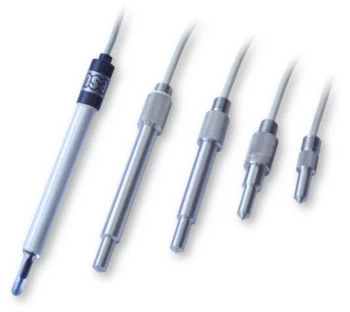
Separate temperature sensors are primarily used to compensate for the temperature dependence of sensors not equipped with built-in temperature sensing. This improves the accuracy of the measurement. The measured temperature reading is usually also available as an output for the user.
| Type | Suitable for | Dimensions | Case material |
| TTK21PL | Industrial probes | Ø14 x 115 mm | Stainless steel |
| TTK21PM | Industrial probes | Ø14 x 94 mm | Stainless steel |
| TTK21PS | Industrial probes | Ø14 x 60 mm | Stainless steel |
| TTK21PX | Industrial probes | Ø10 x 40 mm | Stainless steel |
| TTK21L | Laboratory use | Ø12 (Ø14.5) x 115 (145) mm | Glass |
| Sensor type | NTC thermistor | ||
| Measurement range | -5 to +105 °C | ||
| Compatibility | MFD79, MFD80, MFD88 | ||
| Resistance at 25 °C | 3000 Ω | ||
- Downloads:
 Temperature sensors TTK21 - dimensions
Temperature sensors TTK21 - dimensions
Temperature sensors TNiK21, TNiK115
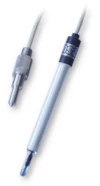
Separate temperature sensors with nickel-type sensing element are only compatible with some older types of our devices. Pay attention to the data in the table.
| Type | Suitable for | Dimensions | Case material |
| TNiK21 | Industrial probes | similar to TTK21 (multiple options) | Stainless steel |
| TNiK115 | Laboratory use | Ø12 (Ø14.5) x 115 (145) mm | Glass |
| Sensor type | Nickel | ||
| Measurement range | -5 to +105 °C | ||
| Compatibility | MFD77, MPH77, MPI77, MFD77PHK, MSV77 (MPH66, MFD66, MFD66PHK, MPI66, MPH66L, MPH44P, MPH44L, MPH44LN, MPH44LT, MPH44, MPH44E) | ||
| Resistance at 0 °C | 2000 Ω | ||
